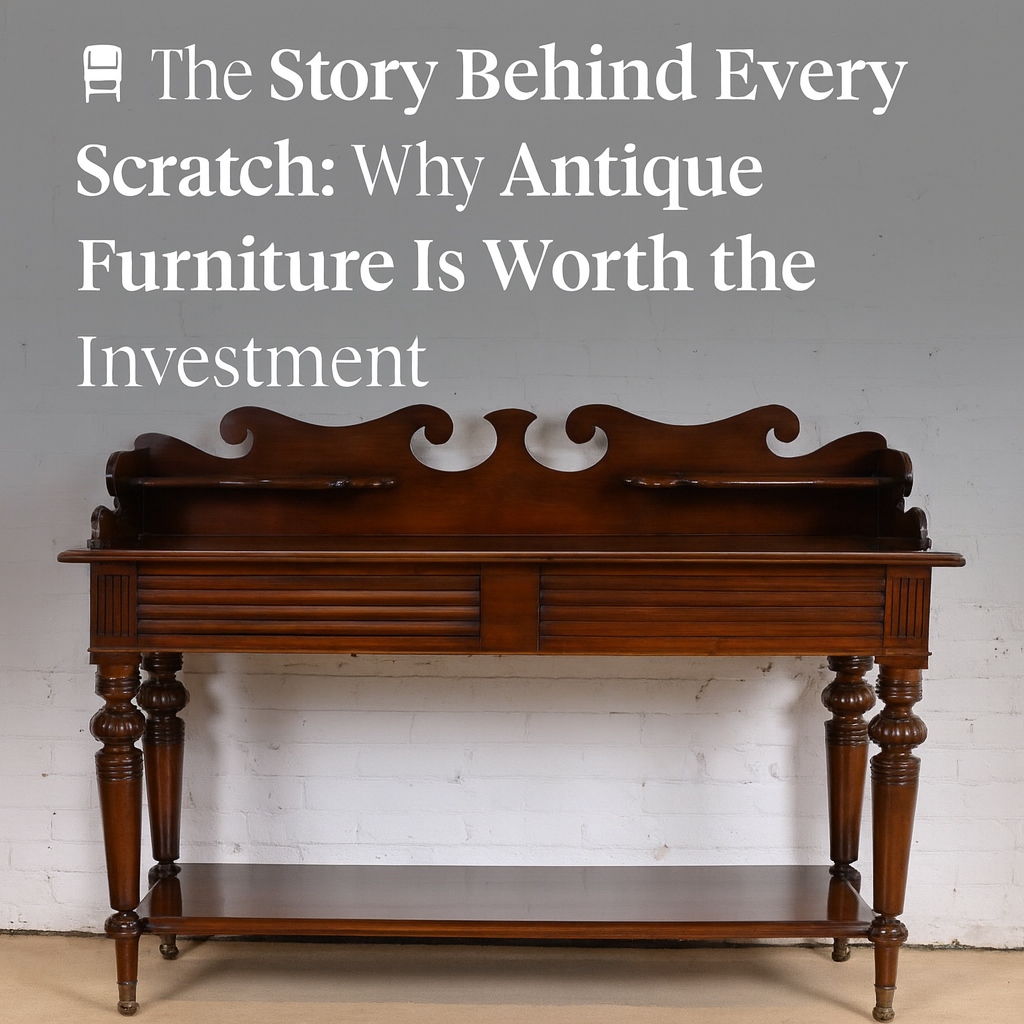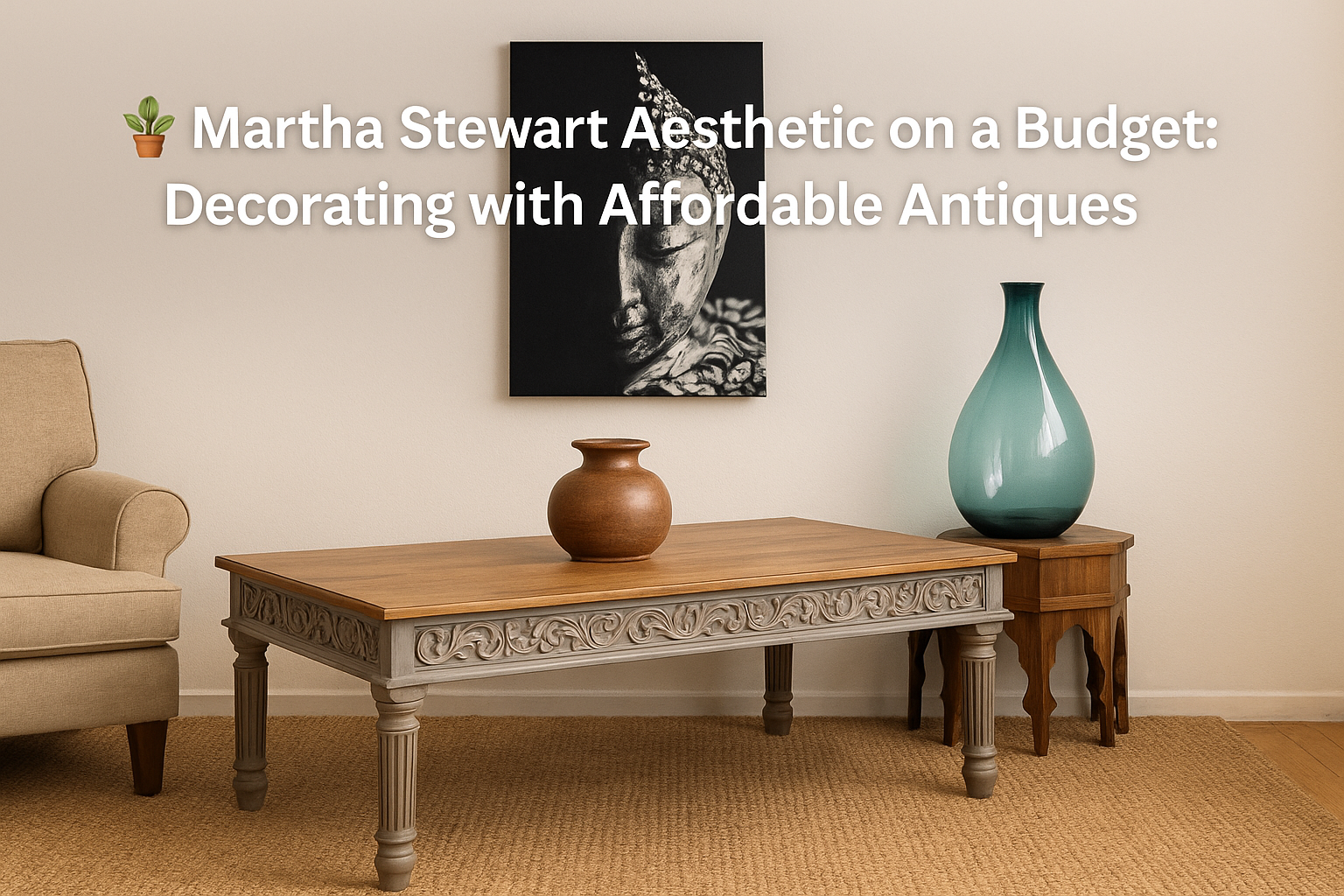Article: 🪑 The Story Behind Every Scratch: Why Antique Furniture Is Worth the Investment

🪑 The Story Behind Every Scratch: Why Antique Furniture Is Worth the Investment
In a world obsessed with “new,” there’s something deeply comforting about the old. And when it comes to home décor, few things carry as much soul, character, and legacy as antique furniture.
From the carved legs of a 19th-century armoire to the aged patina of a farmhouse sideboard, each scratch, dent, and imperfection tells a story. Not of wear—but of history.
So why are more and more American homeowners investing in antique furniture in 2025?
Let’s uncover the value hidden in every aged corner.
🕰️ A Legacy That Money Can’t Manufacture

Antique furniture—typically over 100 years old—is not just functional. It’s an artifact. Every piece has been passed down, lived in, loved, and touched by time.
Each detail, from dovetail joints to hand-carved embellishments, reflects craftsmanship that’s nearly extinct in today’s fast furniture era.
And here’s the secret: those scratches and scuffs aren’t flaws—they’re fingerprints of the past.
🌎 It’s Sustainable, Ethical, and Beautifully Timeless

In today’s world, where sustainability matters, antique furniture stands as one of the most eco-friendly investments you can make:
-
No new trees cut
-
No factories polluting
-
No shortcuts in quality
You're reusing furniture that has already lasted a century—and can easily last another.
Plus, antique pieces aren’t trend-chasers. They blend with everything, from farmhouse to modern industrial, adding instant warmth and gravitas to any room.
💸 Why It’s Smarter Than Fast Furniture
Here’s a truth many learn the hard way: cheap furniture often comes at a high cost.
Within a few years, flat-packed particleboard pieces sag, fade, and end up in landfills. In contrast, a solid oak or mahogany antique cabinet—crafted with joinery and care—grows more valuable over time.
In fact, certain 19th-century designer pieces can even appreciate in value, especially if well-maintained.
So when you invest in antique furniture, you’re not just decorating—you’re building a legacy.
🖼️ It Makes Your Home Feel Like Home

There’s a reason people walk into a room with antique furniture and feel something.
It’s the way a timeworn tabletop catches the light.
The way a weathered drawer pulls smoothly after decades.
The way a carved motif tells of eras long gone, yet somehow still alive.
It’s more than furniture. It’s emotion in wood and iron.
Antique pieces spark stories—about the maker, the owner, the journey. And now? You become part of that story too.
🏡 How Americans Are Styling Antique Furniture Today
The beauty of antique furniture in 2025? It plays well with modern styles. American homes today feature:
-
Antique dressers beside minimalist beds
-
Farmhouse consoles in sleek entryways
-
Victorian armoires against whitewashed walls
-
19th-century dining tables with metal or velvet chairs
It’s all about layering textures, stories, and styles—creating a look that’s deeply personal and uniquely yours.
💬 Final Thought: Imperfection Is the New Luxury
Antique furniture isn’t flawless—and that’s exactly the point.
A nicked corner, faded paint, or timeworn patina doesn’t take away value—it adds authenticity.
In a world of mass production, realness is rare. And in your home, that rarity becomes a reflection of you—your values, your story, your taste.
So the next time you run your fingers over a scratch, don’t sand it out.
Smile. Because that mark is proof that the piece lived before you—and now, lives with you.
❓Frequently Asked Questions
1. How old does furniture have to be to be considered antique?
Generally, furniture is considered antique if it’s over 100 years old. Anything between 20–100 years is typically classified as vintage.
2. Is antique furniture a good investment?
Yes. High-quality antique pieces often appreciate over time, especially those from iconic eras or makers. They're also more durable and unique than mass-produced furniture.
3. How can I tell if a piece of furniture is truly antique?
Look for signs like dovetail joints, hand-planed wood, wear in natural areas, and any maker’s marks. An expert appraisal can also confirm authenticity.
4. Can I mix antique furniture with modern decor?
Absolutely! In fact, blending styles—like placing a 19th-century table in a minimalist room—is one of the biggest interior trends in the U.S. right now.
5. Is antique furniture hard to maintain?
Not at all. Most pieces only need occasional dusting, gentle cleaning, and maybe a wax polish. Their durability often means less upkeep than modern items.
6. Where can I find high-quality antique and 19th-century furniture in the USA?
Explore our timeless collection at 👉 frescoartfurniture.com — each piece is handpicked for its beauty, history, and character.

